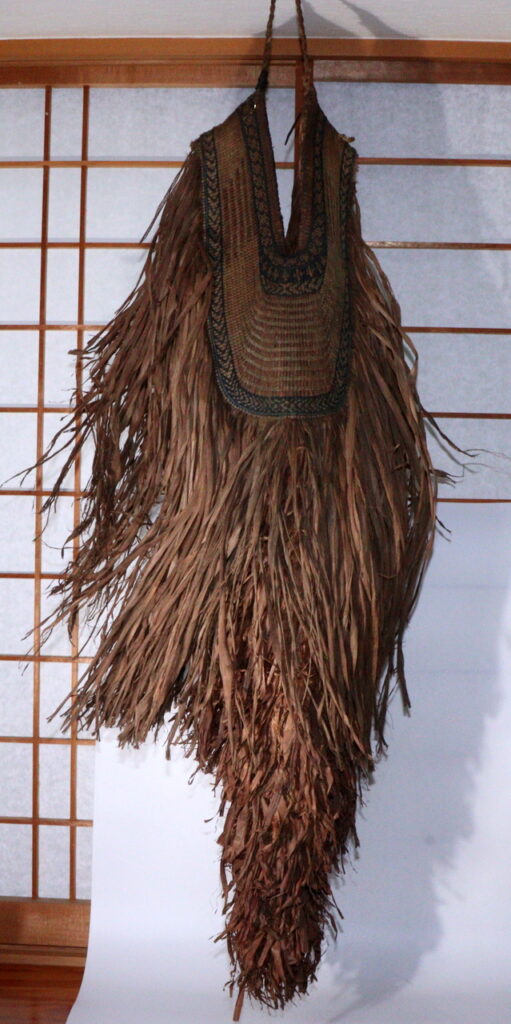
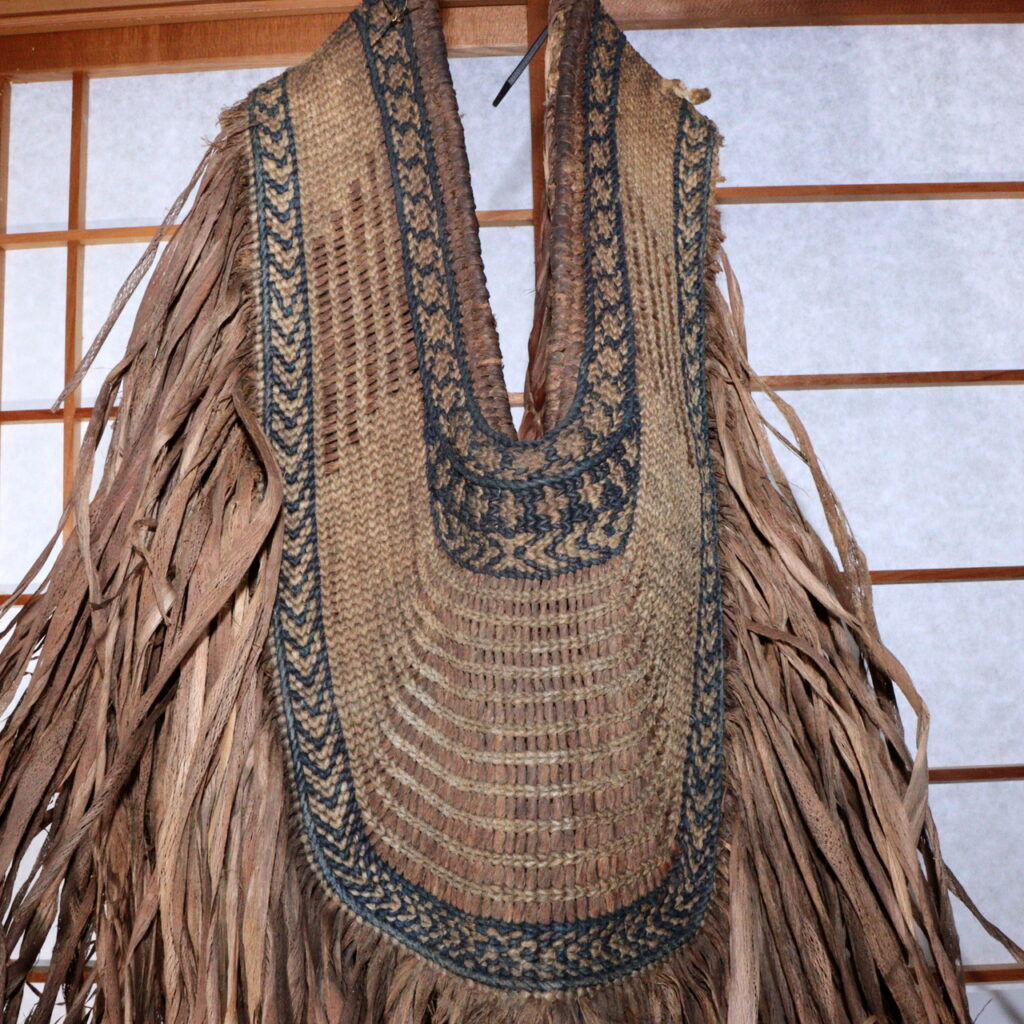
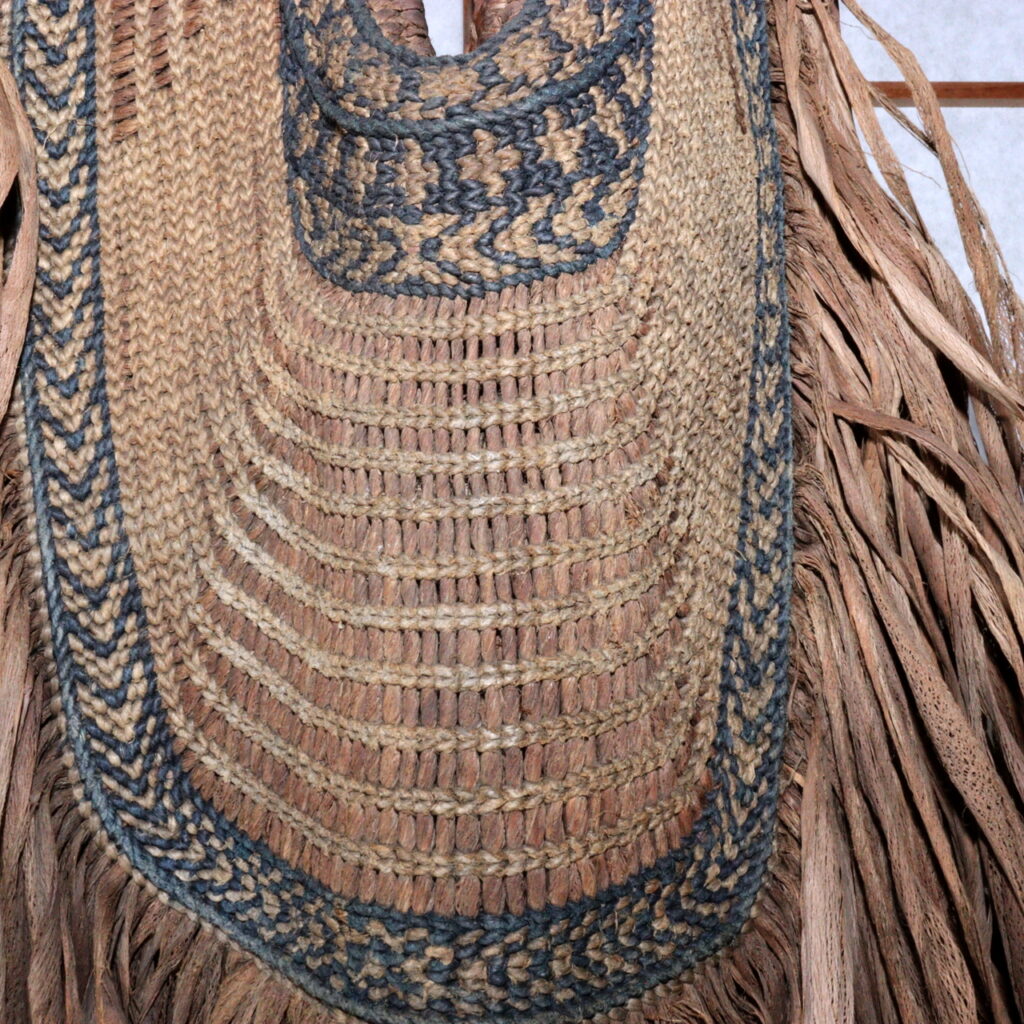
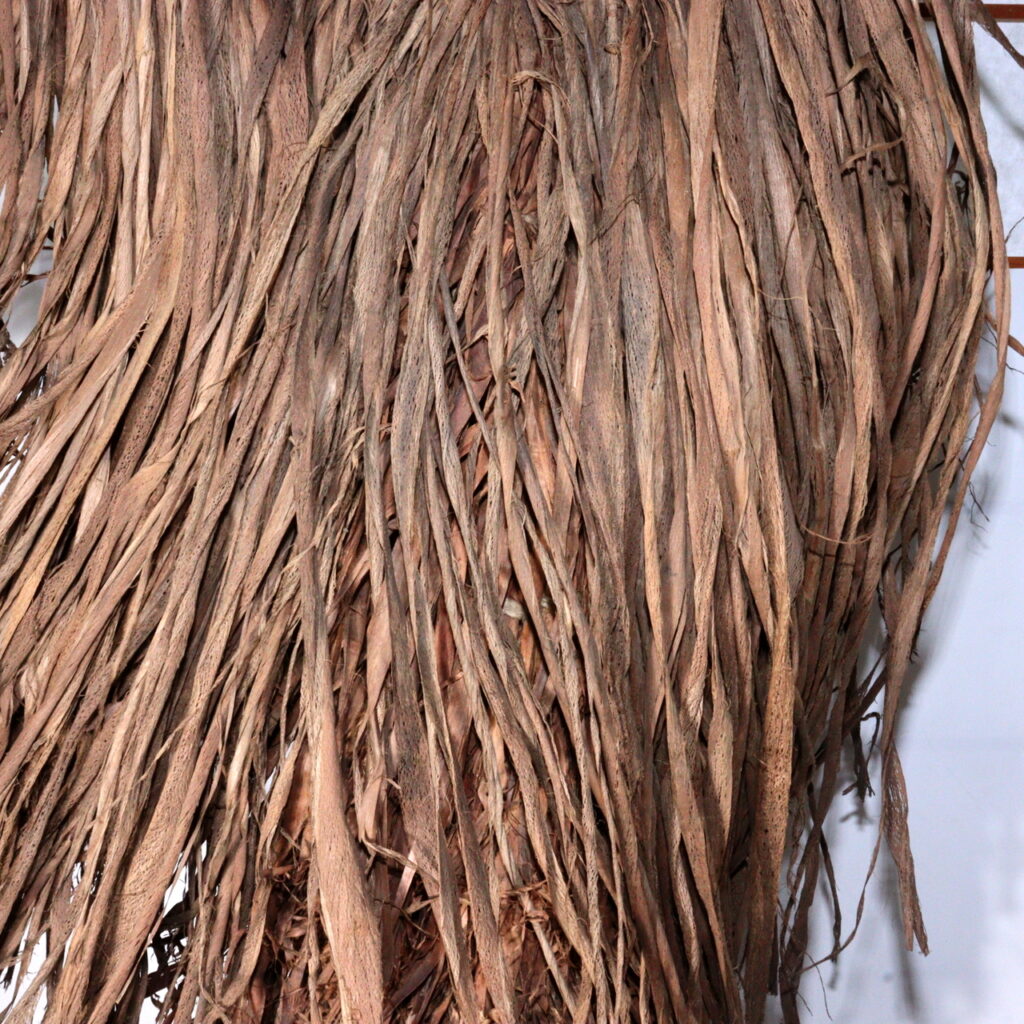
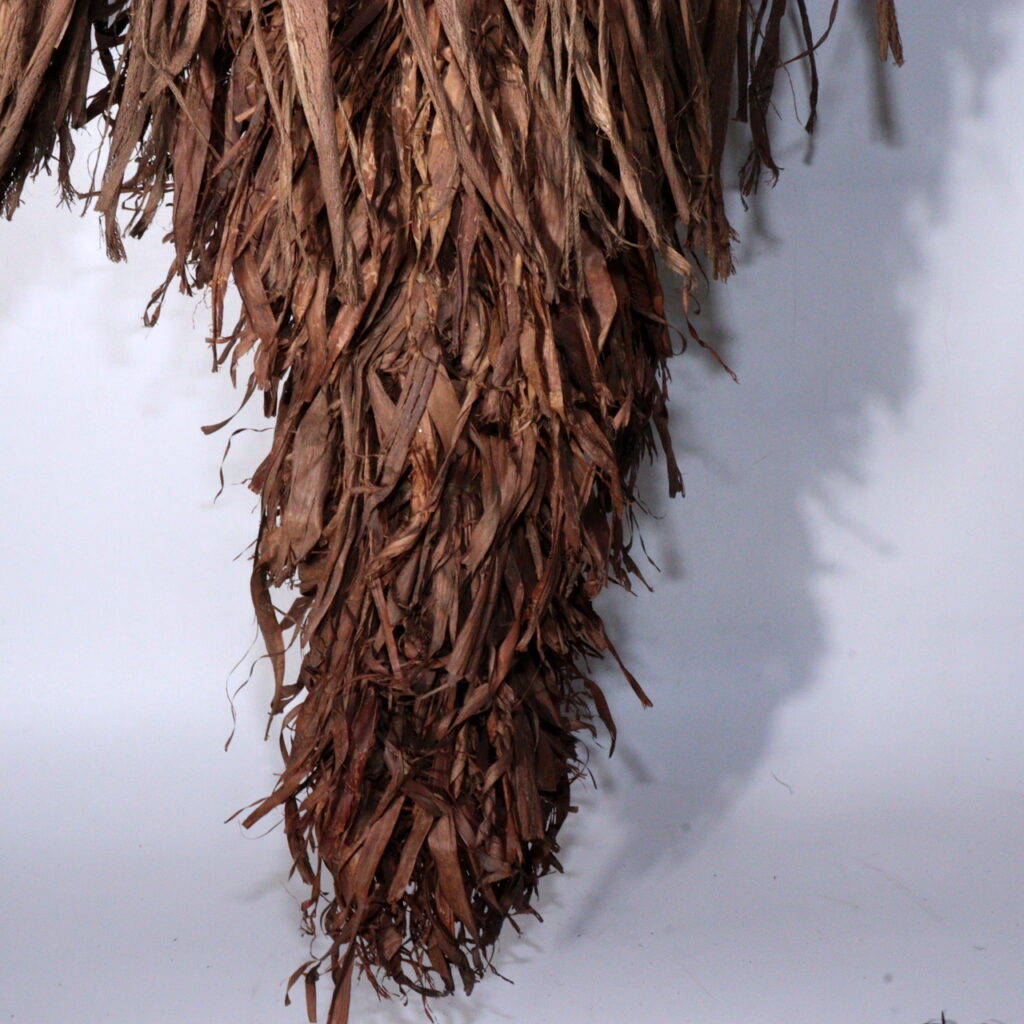
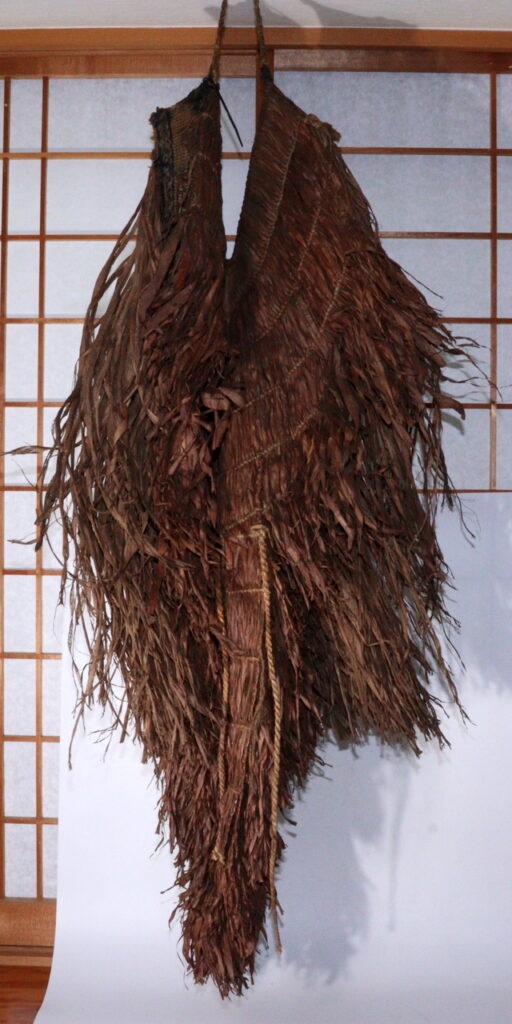
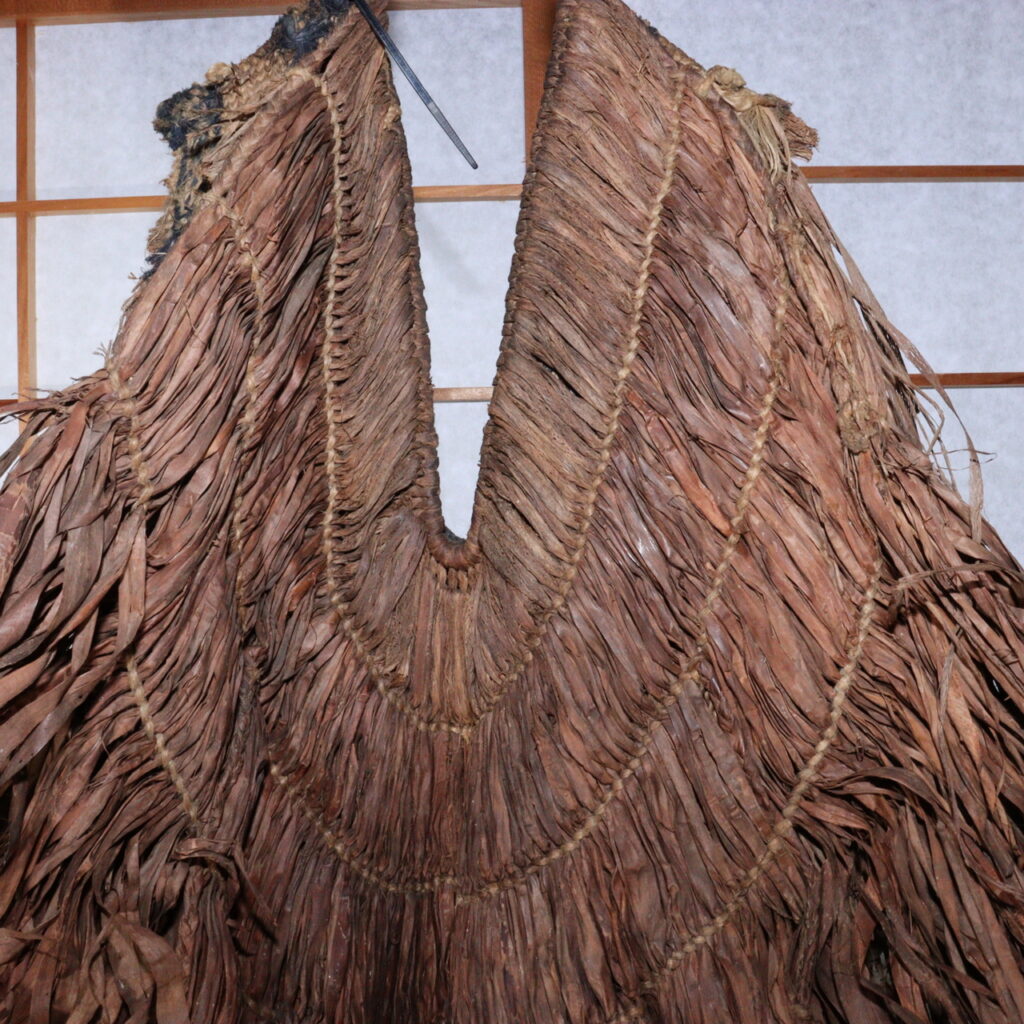
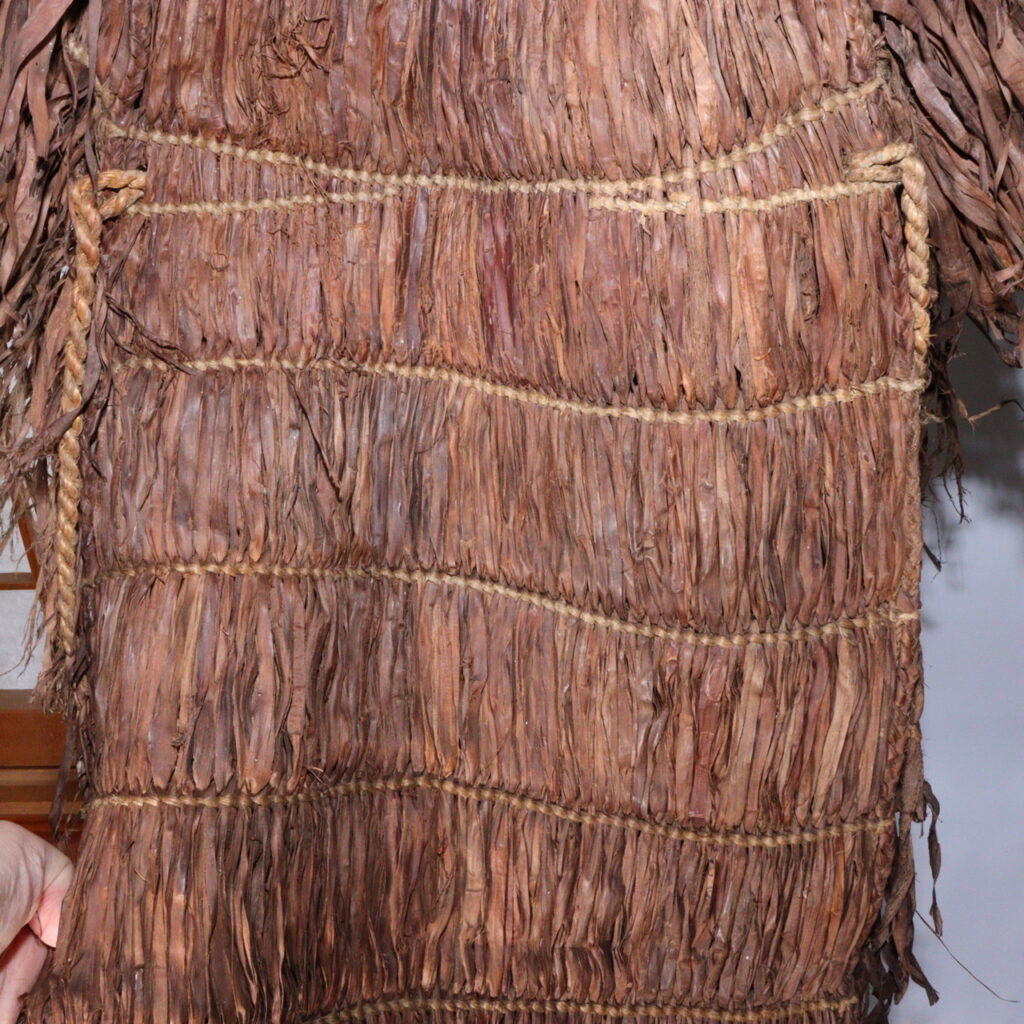

Preserving Tradition Through Nature’s Materials
Among the Japanese antiques that reflect the harmony between human life and nature, few are as evocative as the Origera—a traditional raincoat worn in the Meiji period (1868–1912). Handcrafted from natural fibers and plant materials, this remarkable garment embodies the resourcefulness and artistry of Japan’s rural culture, where even the humblest tools of daily life were infused with grace, symbolism, and craftsmanship.
The Story Behind This Piece
This Meiji-era Origera raincoat originates from the northern region of Tsugaru, Aomori Prefecture, an area known for its long, snow-filled winters and resilient agricultural communities. Before industrial fabrics like cotton or nylon were accessible, villagers relied on local vegetation—reed, hemp, bark, and rice straw—to create garments that protected them from Japan’s relentless rain and snow.
Known regionally as mino or kamiko depending on the style and fiber, the Origera represented the unity of functionality and cultural identity. These raincoats were worn by farmers, woodcutters, and Matagi hunters (the traditional mountain hunters of northern Japan), who ventured into forests and rice paddies through the wet seasons. The construction was practical yet poetic: layers of dried fibers repelled rain while allowing airflow, reflecting a perfect understanding of the natural environment.
Culturally, the Origera also carried symbolic meaning as a gift between men and women, a gesture that represented respect and protection. Its tactile form and natural aroma connected its wearer to the land itself—a living reminder that life and labor in rural Japan were inseparable from nature’s rhythms.
The Beauty and Craftsmanship
At first glance, this Origera captivates the viewer with its earth-toned palette and wild, organic silhouette. Each strand of fiber has been handwoven and layered, creating a garment that is both protective and expressive. The upper yoke and collar area display intricate woven geometric patterns in natural indigo and bark-dyed tones, demonstrating the same precision and aesthetic sensibility found in kogin-zashi (a form of embroidery from Aomori) and Ainu weaving traditions.
The dense fringe of fibers that cascades downward was designed to channel rain away from the body, functioning like natural thatch. This technique not only reflects environmental adaptation but also resonates with the Japanese aesthetic of wabi-sabi—the beauty of imperfection, transience, and handmade authenticity.
Unlike Western raincoats of the same period, which relied on industrial waterproofing, the Origera embodies sustainable craftsmanship—every element sourced, dyed, and woven by hand. It reveals a time when clothing was both tool and art, deeply connected to the seasons and the soul of its maker.
Its Value for Collectors Worldwide
For collectors of Japanese folk art and ethnographic textiles, this Meiji Origera holds immense cultural and historical value:
- Cultural heritage: A tangible example of Japan’s pre-industrial textile ingenuity and rural craftsmanship.
- Traditional craftsmanship: Each fiber hand-processed and woven with techniques passed down through generations.
- Historical authenticity: Once worn by real farmers and hunters in the harsh climates of northern Japan.
- Aesthetic and scholarly value: The piece bridges multiple disciplines—anthropology, textile design, and Japanese cultural history.
- Decorative and educational potential: Perfect for museum display, textile exhibitions, or private collections focusing on traditional Japanese tools of daily life and sustainable design.
In an age that increasingly values environmental awareness, the Origera stands as a timeless lesson in human ingenuity through natural means—a design philosophy that feels surprisingly modern today.
Conclusion & Product Link
This Meiji-era Origera raincoat is more than a garment—it is a story woven from nature, community, and resilience. It speaks of Japan’s relationship with its environment and of the artistry that transforms necessity into beauty. Whether displayed as an ethnographic artifact or admired as a symbol of traditional Japanese design, this piece carries a quiet power that transcends time.
👉 View this item here:
https://koedo-sun-art.com/search?q=matagi&options%5Bprefix%5D=last
If this piece has already found its new home, please explore our other Japanese antique collections here:
🔗 https://koedo-sun-art.com